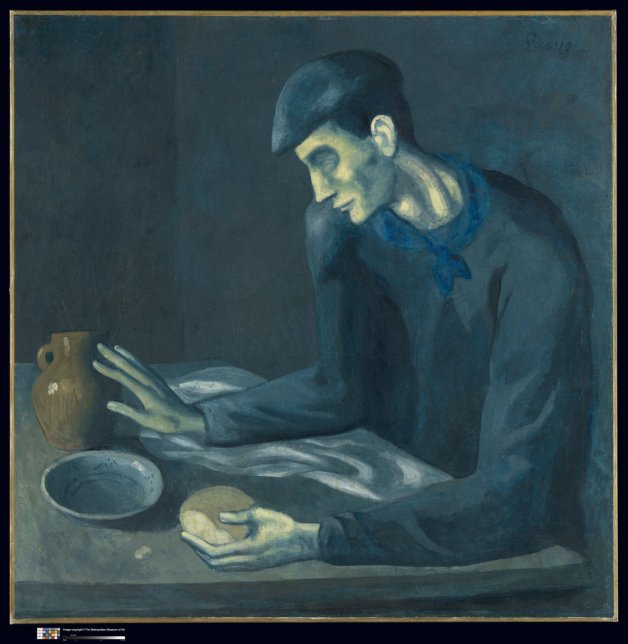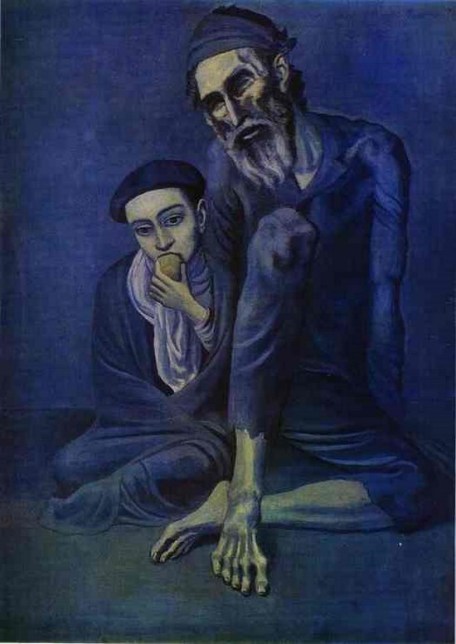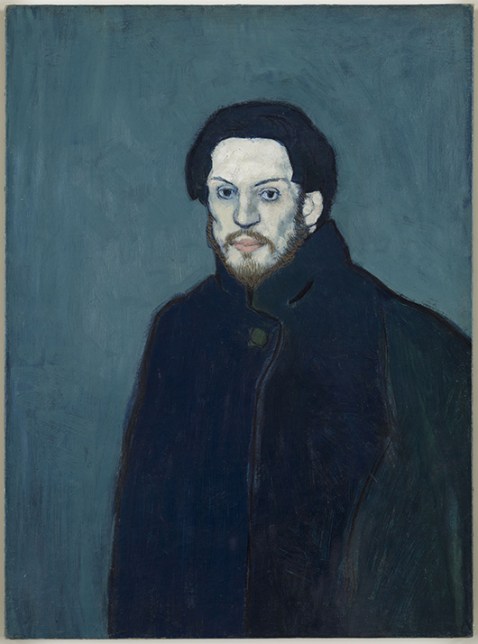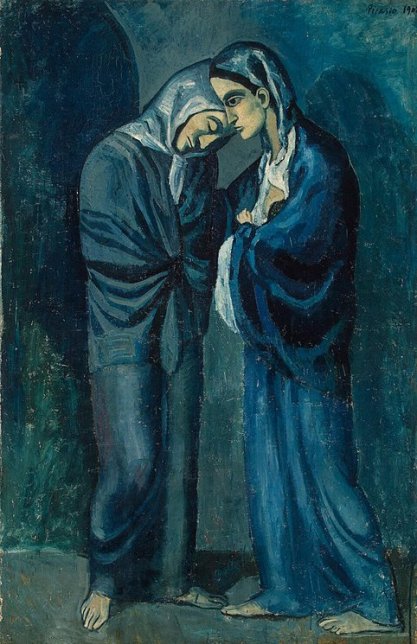
Picasso's Blue Period: A Color Full of Significance

In the year 1900 Picasso was only 19 years old when he arrived in Paris. Living in precarious conditions, he was soon overwhelmed by misery and mourning. From this great suffering was born Picasso’s Blue Period, during which he would paint monochromatic paintings. This color of despair would accompany all his productions from 1901 to 1904 and would mark a turning point in his creative approach. Artsper spotlights this blue period, which is full of symbols, questioning and social criticism.
A tragic beginning
Triggered by a tragic event in 1901, this marked the beginning of the Blue Period. Casagemas, a close friend of Picasso, committed suicide in a Parisian café. This plunged the painter into total grief. A few weeks after the death of his friend, Picasso completed The Death of Casagemas, the last work before the Blue Period. Combining red and yellow, it shows the temporary end of his use of warm colors. From then on, Picasso’s paintings were covered with a chromatic uniformity: blue. A color of melancholy, sadness and despair, blue translates the state of despondency in which Picasso found himself.

The symbology of Picasso’s Blue Period
Both in content and form, the paintings of Picasso’s Blue Period convey a deep sense of loss and mourning. In terms of technique, they are monochromatic with austere lines and efficient composition. They generally have no indication of time or place, as if they represent the universal constancy of pain.
Yet Picasso’s works are not devoid of historical or geographical context. Inspired by his native culture, they refer to the realist painting of the Golden Age or to Spanish literature. There are frequent references to the painter Greco and the Spanish author, Fernando de Rojas. Religious symbolism is also very present, through the representation of figures such as medieval mourners and the Virgin Mary. In this way, Picasso paints the forgotten people – beggars, prisoners, prostitutes, blind people – who were pushed into a lower strand of a society without scruples. Like famished spectators, these portraits confront us with misery, melancholy, death, poverty and old age.

The emblematic works of the Blue Period
At the end of 1901, Picasso painted The Self-Portrait, a dark representation of his time. He gives his own features a gravity out of time with his age. An unflattering portrait, the face is hollowed out, the clothes patched and the air disillusioned. Perhaps the beginnings of his destructive character, to himself as well as to those around him?

During the same year, Picasso met Louis Jullien, a doctor who specialized in venereal diseases. Through him, he visited a hospital of a women’s prison in Saint-Lazare, where he observed the inmates at length. Touched by this social misery, Picasso transformed the patients – mostly prostitutes – into virgins with children or madonnas. Among his productions of the time, L’Entrevue bears witness to this sacralization of the female figure.

One of the most emblematic paintings of this period is a piece entitled The Life, an allegory of the cycle of existence. This painting, which depicts an endless loop, reveals a multiple play on mise en abyme. On the one hand, it represents the different stages of life, such as, pregnancy, birth and death. On the other hand, this work is made up of paintings within the painting. But also hidden under the layers of paint is another kind of renewal. By covering his work Last Moments, Picasso gives a second birth to his painting: The Life.

When melancholy gives way to joy
The Blue Period translates above all the disillusionment of a young man facing the cruelty of the world. Starting from his own desolation, Picasso is interested in a world that, like him, is in pain. But – unprofitable and not necessarily a priority in the eyes of the artist – he would abandon misery for a form of lightness. Without abandoning a melancholy that characterizes him, his meeting with Fernande Olivier in 1904 led him towards more joyful themes. Live performances and acrobats make way for a festive universe. And so, we have the beginning of the Pink Period!

About Artsper
Founded in 2013, Artsper is an online marketplace for contemporary art. Partnering with 1,800 professional art galleries around the world, it makes discovering and acquiring art accessible to all.
Learn more













